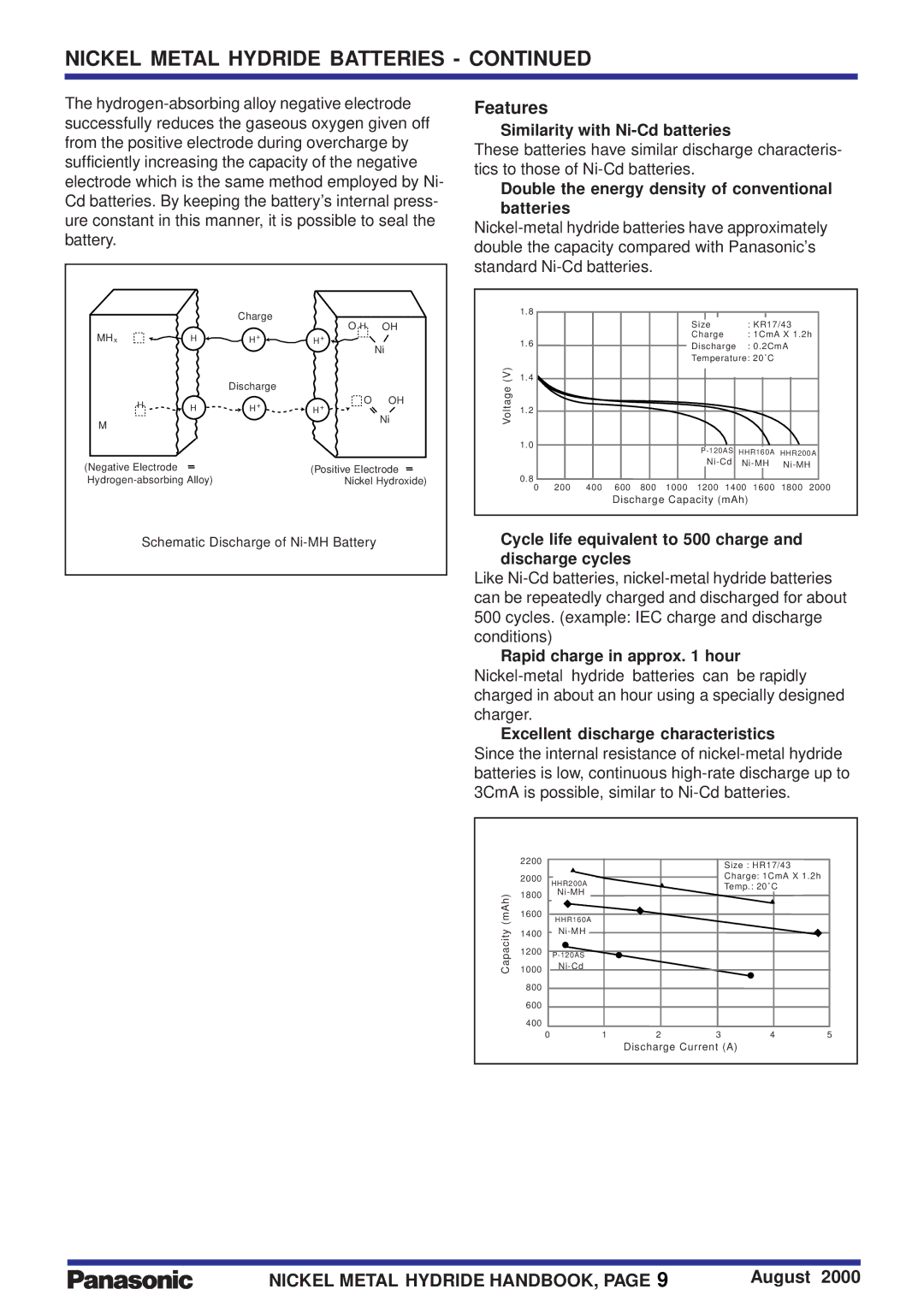
NICKEL METAL HYDRIDE BATTERIES - CONTINUED
The
|
| Charge | O H | OH |
MHx |
|
| ||
H | H+ | H+ | Ni | |
|
|
|
| |
|
| Discharge |
|
|
H |
| H+ | O | OH |
H | H+ | Ni | ||
M |
|
|
| |
|
|
|
| |
(Negative Electrode |
|
| (Positive Electrode | |
| Nickel Hydroxide) | |||
Schematic Discharge of
Features
•Similarity with
These batteries have similar discharge characteris- tics to those of
•Double the energy density of conventional
batteries
| 1.8 |
|
|
|
|
|
|
|
|
|
|
| |
|
| Size |
| : KR17/43 |
| |
| 1.6 | Charge | : 1CmA X 1.2h |
| ||
| Discharge | : 0.2CmA |
| |||
|
|
| ||||
|
| Temperature: 20˚C |
| |||
(V) | 1.4 |
|
|
|
|
|
|
|
|
|
| ||
Voltage | 1.2 |
|
|
|
|
|
|
|
|
|
|
| |
| 1.0 |
|
|
|
|
|
| ||||||
|
| |||||
|
|
| ||||
0.8
0200 400 600 800 1000 1200 1400 1600 1800 2000
Discharge Capacity (mAh)
•Cycle life equivalent to 500 charge and discharge cycles
Like
•Rapid charge in approx. 1 hour
•Excellent discharge characteristics
Since the internal resistance of
Capacity (mAh)
2200
2000
HHR200A
1800
1600
HHR160A
1400
1200
1000
800
600
400
0 | 1 | 2 |
Size : HR17/43
Charge: 1CmA X 1.2h
Temp.: 20˚C
345
Discharge Current (A)
NICKEL METAL HYDRIDE HANDBOOK, PAGE 9 | August 2000 |
